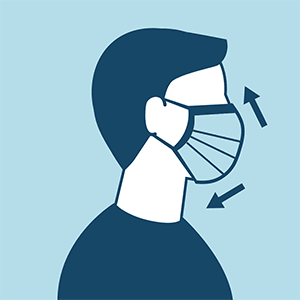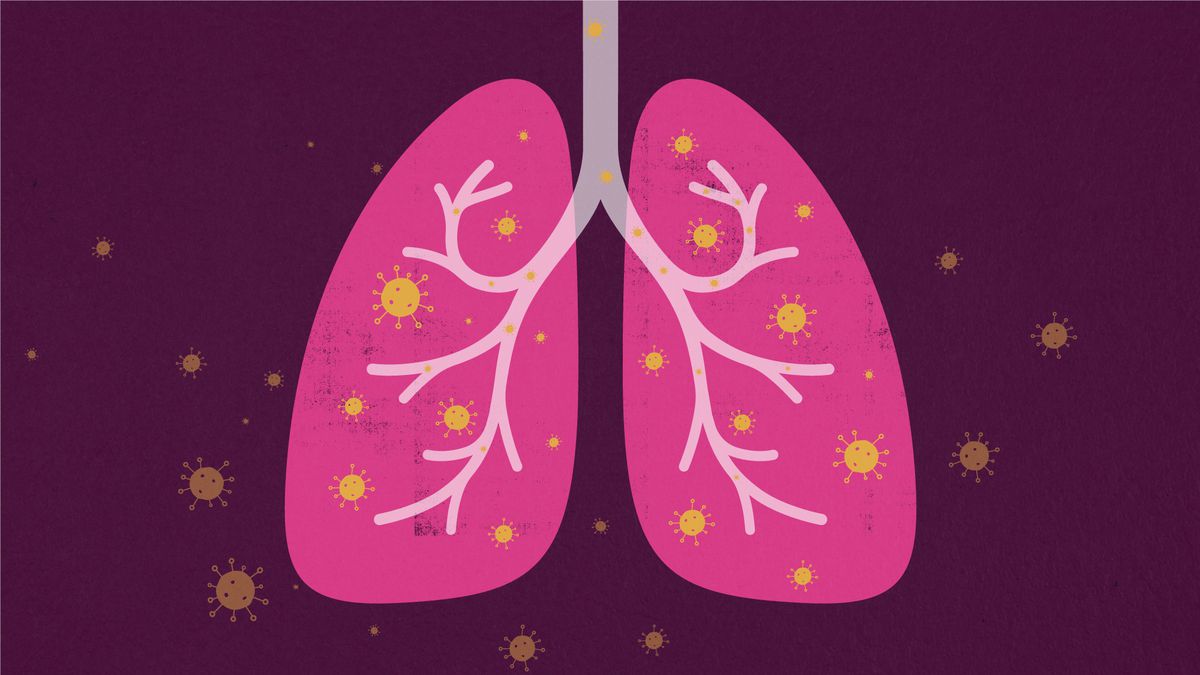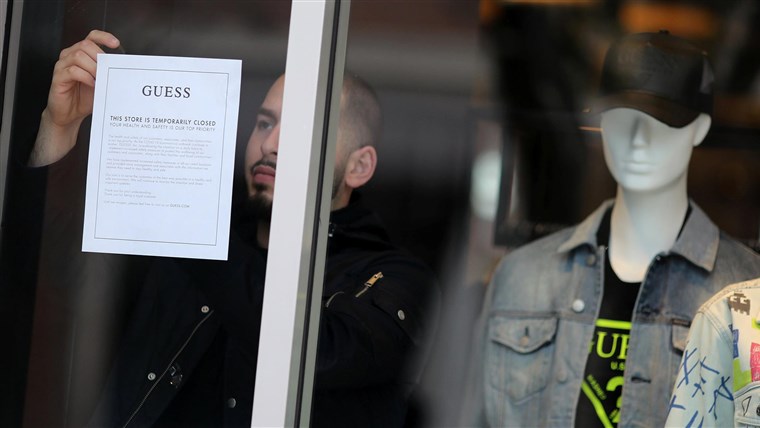
Worldwide there are over 19 million confirmed cases and over 780,000 deaths. Confirmed coronavirus cases in the United States have topped 5.3 million and 166,000 deaths — by far the highest caseload in the world. Brazil has over 3 million confirmed cases and 165,000 deaths, the second highest number of cases behind the US. As the new school year starts or approaches for kids across the US, a new report by the American Academy of Pediatrics found that nearly 100,000 children contracted COVID-19 in the last two weeks of July.
Across five US states, more than 2,000 students, teachers and school employees have been quarantined, after hundreds tested positive for the coronavirus at the start of the school year. That includes nearly 1,200 people quarantined in the Cherokee County School District outside Atlanta, Georgia. In another Georgia school district, a high school that recently suspended two students for posting images of classmates ignoring social distancing guidelines and not wearing masks announced it is implementing remote learning for part of the week, after at least nine students and staffers tested positive for COVID-19.
A school district in Arizona canceled its plans to reopen schools after several dozen teachers staged a “sick out” in protest. “We have received an overwhelming response from staff indicating that they do not feel safe returning to classrooms with students,” Gregory Wyman, the superintendent of the J.O. Combs Unified School District, said in a letter to families posted online Friday. “In response, we have received a high volume of staff absences for Monday citing health and safety concerns.” All classes, including virtual learning, will be canceled, though breakfasts and lunches will be available for pickup, he said. Arizona has over 190,000 confirmed cases and over 4,000 deaths.
In California, the director of the Department of Public Health abruptly resigned Sunday, following the discovery of a computer system failure that led to an undercounting of California’s COVID-19 cases. California has a recorded 630,000 cases and 11,545 people have died. With cases still surging, most schools in California will not be reopening for in-person education this month.
Across the globe in New Zealand, Prime Minister Jacinda Ardern warned Auckland may go back into a lengthy lockdown, after 13 new community coronavirus cases were detected. New Zealand spent more than 100 days without reporting any cases, after health officials responded early and aggressively to the pandemic. They have 1,458 confirmed cases and just 22 deaths.
In Australia, Melbourne remains on a strict lockdown as the country reported a record 21 coronavirus deaths. Sixteen of the deaths are linked to outbreaks in nursing homes. Australia has over 23,000 confirmed cases and over 400 deaths recorded.
Dr. Deborah Birx, the Coronavirus Response Coordinator for the White House Coronavirus Task Force said the US is in a new phase in its fight against the coronavirus pandemic, saying that the deadly virus is more widespread than when it first took hold in the US earlier this year. “What we are seeing today is different from March and April. It is extraordinarily widespread. It’s into the rural as equal urban areas.” Birx stressed that Americans need to follow health recommendations, including wearing a mask and practicing social distancing. Birx would not give a projection of how many deaths the US would see by the end of year, but she said a death toll largely depends on southern and western states to maintain and accelerate their mitigation efforts. Those states have become hot spots for the virus
Read more

The U.S. death toll from the coronavirus pandemic has topped 156,000 as the number of people hospitalized with COVID-19 soared in July by nearly 50%. There are now over 5 million confirmed cases in the US with California, Florida and Texas each reaching over 500,000 confirmed cases, nearly double the cases reported in New York City, the former leading epicenter of the pandemic in the US. Nearly half of the US confirmed cases have recovered.
The Centers for Disease Control and Prevention (CDC) said that a significant number of COVID-19 patients do not recover quickly, and instead experience ongoing symptoms, such as fatigue and cough. Eight months into the global pandemic, we’re still measuring its effects only in deaths. Non-hospitalized cases are termed ‘mild’ and are largely not followed up. Recovery is implied by discharge from hospital or testing negative for the virus so ongoing ill health in those classed as ‘recovered’ is going largely unmeasured as the focused has mainly been on slowing the infection rate.
Research that follows COVID patients after discharge from hospital is starting but there is still a gap in quantifying and characterizing COVID-related illness in those not hospitalized. The few studies on those who have recovered indicate that previously healthy people with persistent symptoms such as chest heaviness, breathlessness, muscle pains, palpitations and fatigue, which prevent them from resuming work or physical or caring activities, are still classed under the umbrella of ‘mild COVID’. As many as a third of patients who were never sick enough to be hospitalized are not back to their usual health up to three weeks after their diagnosis. Many with long-term symptoms are otherwise young and healthy. Among those surveyed between ages 18 and 34, about 20 percent experienced lasting symptoms.
Among the patients who experienced lasting symptoms in a CDC report, 71 percent reported fatigue, 61 percent had lasting cough, and 61 percent reported ongoing headaches. Although clinicians and researchers have an idea of who is at increased risk of dying from COVID, we don’t know who is more likely to experience prolonged ill health following symptomatic, or even asymptomatic, infection. The CDC still states that preventative measures, such as physical distancing, face masks and frequent hand-washing, continue to be important to slow the spread of COVID-19. They warn that worldwide, millions of those still alive who got ill without being tested or hospitalized are simply not being counted.
The World Health Organization reports cases are now doubling every six weeks. The United States, Brazil, and the United Kingdom have been among the countries hardest hit by the pandemic. The global death toll from the coronavirus has surpassed 700,000, with nearly 19 million confirmed cases, as the pandemic continues to accelerate. During the month of July, more than 8 million people tested positive — almost as many as in the first six months of the pandemic combined. Nearly 12 million of those confirmed cases have recovered.
The top White House coronavirus adviser Deborah Birx has warned the country has entered a new phase in its fight against the pandemic. A new model by the Institute for Health Metrics and Evaluation suggests the U.S. coronavirus death toll is on pace to reach nearly 300,000 by December. The institute projects 66,000 lives could be saved if 95% of people in the United States wear face coverings. The U.S. death toll currently stands at the highest total in the world.
Read more

As concerns about the coronavirus rippled across the globe, the US president declared the Covid-19 outbreak a national emergency as public life in America continues to grind to a halt. Schools have closed to millions of students, creating anxiety for working parents across the country. Travel bans have been widened and some cities across America have issued curfews or “shelter in place” orders to slow the spread of the virus. More “shelter in place” orders are expected as the number of confirmed cases continues to rise and has now been found in all 50 states.
Shelter in place orders will come from local government rather than federal. A growing number of countries have also imposed lockdowns that effectively shut down public life, but the details of such lockdowns vary dramatically. Italy banned all public gatherings and set a 6 p.m. curfew but allowed travel for work or health reasons, while in China, millions of residents are restricted from even going to shop for groceries.
The “shelter-in-place” order that San Francisco adopted has fairly large exemptions for health, work, food and even exercise. City officials ordered residents to remain in place at their homes except for essential activities, essential business, and essential government functions, including tasks essential to maintain health and safety, such as obtaining medicine or seeing a doctor or getting necessary services or supplies for themselves or their family or household members, such as getting food and supplies, pet food and supplies necessary for staying at home.
The order also includes:
- Engaging in outdoor activity, such as walking, hiking or running provided that they maintain at least 6 feet of social distancing.
- Caring for a family member in another household.
- Caring for elderly, minors, dependents, people with disabilities or other vulnerable persons.
Treasury Secretary Steven Mnuchin outlined a variety of potential proposals to Senate Republicans as part of a legislative package to help Americans and industries that are reeling from the coronavirus. The administration proposed an initial $250 billion could be sent to Americans as early as the end of April if it can muster congressional approval.
Sen. John Thune noted that getting cash assistance to Americans is something that has historically taken some time, but “I think there are ways now electronically that you can process things more quickly.” The proposal has fairly widespread support from Senate Republicans, who say it will offer immediate assistance to Americans impacted by the virus. Some lawmakers have varying ideas about how the proposal should work, including who should receive the payments and how much each American should get.
Read more





